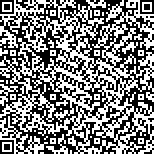|

二维码(扫一下试试看!) |
| The Quality Prediction Model of Ink-jet Paper Based on AHP and DEA |
| |
| DOI:10.11981/j.issn.1000-6842.2018.04.31 |
| Key Words:ink-jet paper; analytic hierarchy process; data envelopment analysis; prediction model |
| Author Name | Affiliation | | QU Zhen-cai1,2 | 1.Department of Packaging and Printing, He′nan University of Animal Husbandry & Economy, Zhengzhou, He’nan Province, 450011;2. Guangzhou Institute of Chemistry, University of Chinese Academy of Sciences, Guangzhou, Guangdong Province, 510650 |
|
| Hits: 5243 |
| Download times: 1421 |
| Abstract: |
| In order to improve the quality of ink-jet prints and reduce the rejection rate of products, it is necessary to establish a scientific and reasonable evaluation model of ink-jet paper. In many evaluation models, AHP (Analytic Hierarchy Process) focuses on subjective experience, and DEA (Data Envelopment Analysis) relies on objective data. To synthesize the advantages of AHP and DEA, the quality prediction model combining subjective evaluation and objective evaluation could be established, which is more in line with the production needs of ink-jet printing operation. Four kinds of ink-jet paper were selected, and the surface characteristics such as absorbency, roughness, ash content, whiteness and gloss were tested. The weight of each characteristic index on the quality of ink-jet paper was calculated by linear weighting, and finally the quality prediction model of ink-jet paper based on AHP and DEA was established. Under the same experimental conditions, the SEM images of four kinds of ink-jet paper were analyzed and the GATF standard ruler was printed. The average diameter of the dot was measured by QEA image analyzer. The results showed that the ink-jet paper quality prediction model based on AHP and DEA could accurately predict the printing quality of the ink-jet paper by using the SEM image and the average diameter of the dot as the testing standard. When using the model to evaluate the quality of the paper, the proofing process is omitted, and it has scientific and practical characteristics compared with the traditional evaluation method. |
| View Full Text View/Add Comment Download reader HTML |

